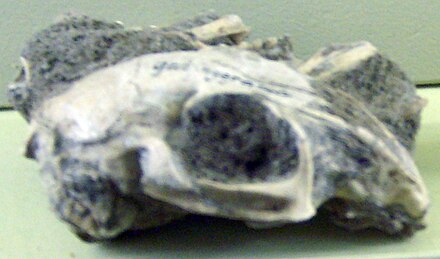Leporidae
Pentalagus
Bunolagus
Nesolagus
Romerolagus
Brachylagus
Sylvilagus
Oryctolagus
Poelagus
Caprolagus
Pronolagus
Lepus
†Aztlanolagus
†Nuralagus
Leporidae is the family of rabbits and hares, containing over 60 species of extant mammals in all. The Latin word Leporidae means "those that resemble lepus" (hare). Together with the pikas, the Leporidae constitute the mammalian order Lagomorpha. Leporidae differ from pikas in that they have short, furry tails and elongated ears and hind legs.
The common name "rabbit" usually applies to all genera in the family except Lepus, while members of Lepus (almost half the species) usually are called hares. Like most common names, however, the distinction does not match current taxonomy completely; jackrabbits are members of Lepus, and members of the genera Pronolagus and Caprolagus sometimes are called hares.
Various countries across all continents except Antarctica and Australia have indigenous species of Leporidae. Furthermore, rabbits, most significantly the European rabbit, Oryctolagus cuniculus, also have been introduced to most of Oceania and to many other islands, where they pose serious ecological and commercial threats.
Leporids are small to moderately sized mammals, adapted for rapid movement. They have long hind legs, with four toes on each foot, and shorter fore legs, with five toes each. The soles of their feet are hairy, to improve grip while running, and they have strong claws on all of their toes. Leporids also have distinctive, elongated and mobile ears, and they have an excellent sense of hearing. Their eyes are large, and their night vision is good, reflecting their primarily nocturnal or crepuscular mode of living.[2]
Leporids range in size from the pygmy rabbit (Brachylagus idahoensis), with a head and body length of 25–29 cm, and a weight of around 300 grams, to the European hare (Lepus europaeus), which is 50–76 cm in head-body length, and weighs from 2.5 to 5 kilograms. Female leporids are almost always larger than males, which is unusual among terrestrial mammals, in which males are usually the larger sex.[3]

